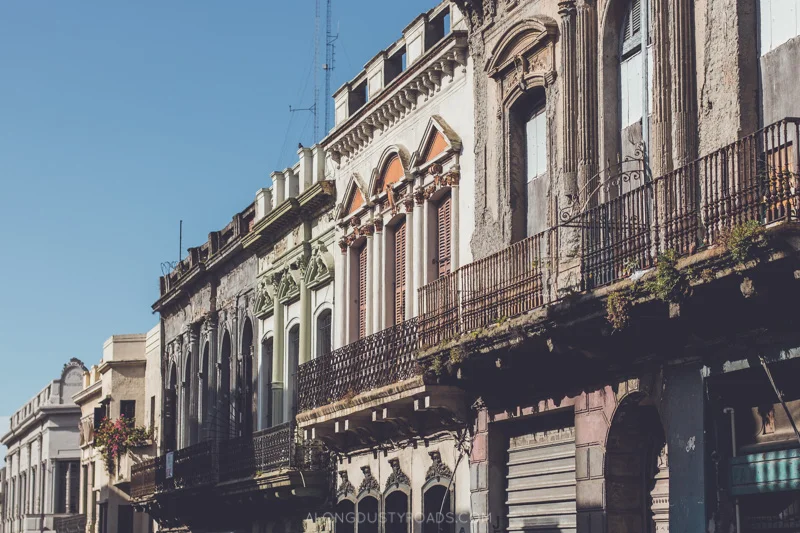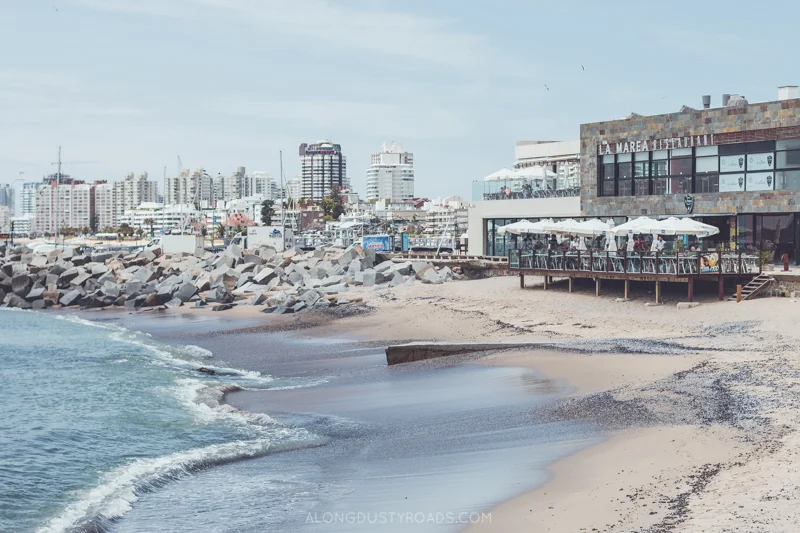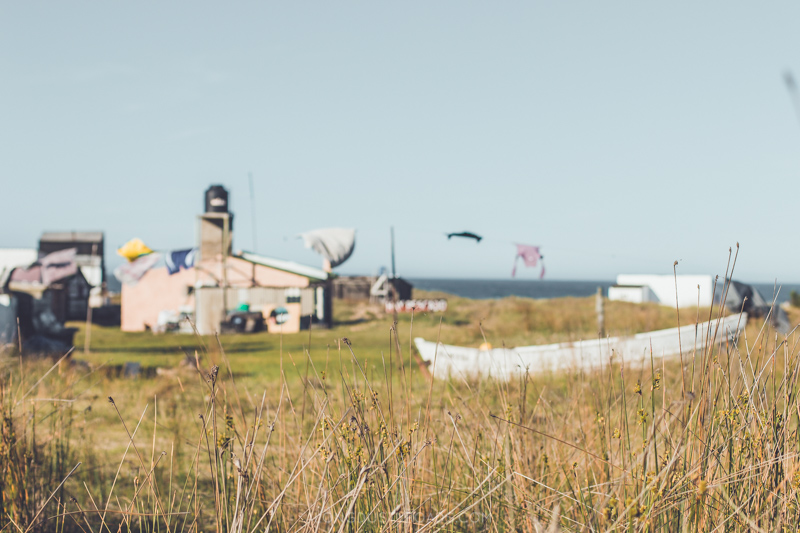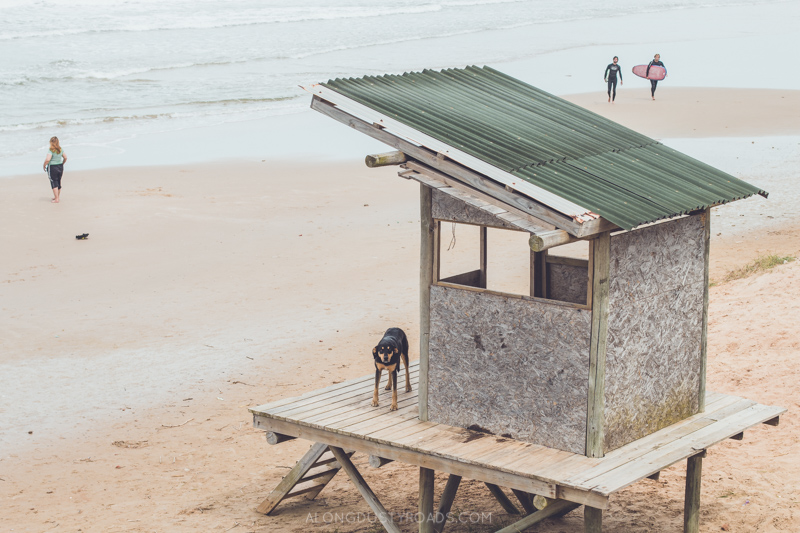Little Uruguay is home to some lovely beaches and, for those travelling the south of South America in search of a fix of sun, sand and surf, it is a worthwhile way to spend a few weeks between Brazil and Argentina. Aside from a few off-the-beaten-path attractions in the north of the country, most travellers will only discover the southern coastal stretch and, as it is such a compact country to travel within, you're never more than two or three hours from your next destination.
We spent three weeks travelling the coast – from the colonial charms of Colonia del Sacramento eastward to the rugged landscapes of Punta del Diablo – so we could give you the low down on what to expect, where you can't miss and how best to spend your time between the most popular destinations. Within this post, we've listed the main spots in the order you're likely to travel them if you're arriving from Argentina. If you're entering from Brazil, then the order is likely to be the same, but in reverse.
Colonia del Sacramento
A beautiful little place in parts, Colonia del Sacramento is only an hour's ferry-ride away from Buenos Aires. Although there isn't necessarily much to do, its cobble-stoned streets, colourful colonial homes and charming restaurants and cafés in the historical district (a Unesco World Heritage site), make it an enjoyable place to spend an afternoon or two wandering around.
This was a pirate's and smuggler's cove with ownership swapping hands between the Spanish and Portuguese countless times during the colonial period, and the architecture in the old part of town is little changed. A highlight is La Calle de los Suspiros (the street of sighs), named either because of brothels, drowned prisoners or a lover's ghosts, which is one of the most photographed spots in the country,
There is a modern part of town, with a few bars, banks and restaurants, which is nothing special, but thankfully has quite a few supermarkets. There are eight small but unremarkable museums too, with one ticket giving you entry to all of them - click here for more information.
great for: Although the day tour tourists on golf buggies stick out like a sore thumb, everybody will enjoy an afternoon strolling in the sun, photographing the old buildings and sipping some wine in Colonia.
our travel tip: Ganache Café & Pasteleria, on 178 Calle Real, is a lovely little coffee shop to hang out in for an hour or two.
where we stayed: Hostel El Español. It's very basic, without much of an atmosphere, but will do a job for anyone spending a night or two on a budget. The breakfast is poor and the lockers are on their last legs, but the large kitchen is good for home-cooked meals. It's also one of the closest hostels to the ferry and bus terminals - and it's cheap with dorms from £10/night! Find out more and check availability here..
onward connections: Regular daily bus departures to Montevideo (2 hours). There are also daily ferries across the Rio Plata to Buenos Aires (1 hour). The bus terminal and the ferry terminal are next door to each other, about 5 minutes walk from the historical centre.
Montevideo
Although it may not be best known for its beaches, the capital city Montevideo actually has a couple of nice spots to spend the afternoon basking in the sunshine. Walk or cycle along the 'La Rambla' on a summer weekend, and you'll find most of the city's population on the clean, golden sand beaches of Playa Ramirez or Pocitos.
However, the real charms of Montevideo reveal themselves on an afternoon in La Ciudad Vieja.
great for: Montevideo was a really pleasant surprise to us, and we'd encourage everyone visiting Uruguay to spend a few days there discovering not only the beaches, but the charming old city and its laid-back version of Latino city life.
our travel tip: Haven't tried mate yet? Then head to La Materia Canaria in Mercado Agricolafor your first sip of the drink Uruguayans are addicted to. Also, navigate the city with the excellent local bus network.
where we stayed: Destino 26. Based in Pocitos, this is a gem of a hostel with lots of dorms and a few privates. Friendly multi-lingual staff, a good kitchen, one of the better hostel breakfasts we've had in South America and a huge courtyard where you can enjoy an asado with new friends. Find out more and check availability here.
onward connections: Regular daily departures to Punta del Este (2.5 hours) leave from Tres Cruces Terminal, which is a local city bus ride away from the old town or Pocitos.
Punta del Este
After Montevideo, your likely next stop is the 'Monaco of South America' - Punta del Este. This is Uruguay's biggest tourist destination, with the population soaring from 20,000 in low season to 250,000 in peak December/January. Expect traffic jams, increased room rates and one hell of a party if your visit coincides.
It's over-developed in parts with hundreds of tower block apartments and holiday homes, and is certainly more catered towards the wealthy local summer holiday crowd (it's also incredibly popular with Argentinians and Brazilians). This is where the beautiful young people come to show off their beach bodies, get a tan, eat and drink well then hit an all-night club or casino.
However, if the sun is shining and you take a dorm bed instead of a private, then budget backpackers will likely still have a good enough time here, especially if you're in the mood for some fun, surf and sun.
great for: If you prefer laid-back, off-the-beaten-track beach towns, then you'll probably hate Punta del Este and should head towards the beaches of Rocha. If you don't mind sharing the beach with others, holiday-makers and spending a bit more cash on a fun time, then you'll probably like it here quite a lot. The town is also a hub for surfers. Punta is also a good base from which to take a local bus and explore the beaches of Jose Ignacio - 'the chicest spot in Latin America' - only 20 miles away.
our travel tip: In the mood for seafood? Visit the photogenic harbour where you can buy some good value fresh produce, chat with the charismatic fishermen and, if you're lucky, spot the sea-lions trying too mooch the scraps.
where we stayed: Tas D'Viaje. An excellent, modern hostel, the team at Tas have put a lot of thought into the design of all the rooms and social areas. With its maritime-inspired colour schemes and furniture, it feels fresh and cool. It has a good, well-equipped kitchen and lovely outdoor area to have breakfast or watch the sunset with a beer in hand. Book your room here - you won't regret it!
onward connections: From Punta del Este's bus terminal, a few blocks from Tas D'Viaje, you will find daily departures to Montevideo and Rocha (where you can transfer for onward travel to La Paloma/La Pedrera) . We'd advise visiting the day before you travel, especially in high season, to confirm times and reserve your place.
La Paloma / La Pedrera
The twin beach towns of La Paloma and La Pedrera might just be the best little beach towns in all of Uruguay. We based ourselves in La Paloma, with a hostel right next to the deserted beach, and loved it. There isn't necessarily that much to do (although this is regarded as one of the best surf spots in Uruguay by some), but between breakfasts on the balcony, discovering the beaches and surrounding area on foot with some four-legged companions and witnessing some gorgeous sunsets, we were very content.
The town itself is a little dated and run-down in parts (especially on the main strip leading to the lighthouse), but with its dusty roads, chilled out locals and pretty beach, La Paloma certainly gave us the sort of sandy-toed, salty-haired experience we were craving. Neighbouring La Pedrera is also a popular pick with a similar vibe and is walking distance away.
great for: Lazy days, walking around barefoot and sipping mate, before enjoying the sunset with someone you love. However, in high season, you might be sharing all of that with hundreds of others.
our travel tip: The sunsets here are incredible, so don't miss them!
where we stayed: La Balconada Beach Hostel. Right next to the beach, this is one of few hostels in town and we really enjoyed our stay there. There's a small kitchen, a great, bright living room upstairs with a little balcony and lots of outdoor seating to hang out in the sun. We wouldn't recommend anywhere else. Find out more and check availability here.
onward connections: The bus terminal is about 5-10 minutes walk from the main beach, and has departures to Cabo Polonio junction (1 hour), Rocha (45 minutes) and Montevideo (3 hours).
Cabo Polonio
Cabo Polonio was a little strange and definitely unlike anywhere else we've visited on this trip. On the one hand, it's a small community where electricity and running water are not allowed, only one shop exists and sea-lions outnumber permanent residents. On the other, it's an immensely popular beach destination for Uruguayans which charges a lot for the privilege of staying in poor digs.
Andrew really loved it, Emily less so. It has a rugged, idiosyncratic beauty when the sun is shining, whilst at night the stars dazzle and the only light is from the crackling bonfires.
great for: Hippies and most backpackers will really love it here (think bonfires, guitar music, walking barefoot) but Cabo is also a very popular spot with Uruguayan families and holiday-makers. If you don't like being away from luxury, then it's probably not for you.
our travel tip: If you plan on walking anywhere or cooking in the evenings then a head-torch is essential – also there are no ATMs in town. A few travellers end up arriving in Cabo after dark, but we'd stress that you should try and avoid this as it will be near impossible to navigate your way around the place.
where we stayed: Lobo Hostel Bar. The friendly couple who run this place create a great atmosphere amongst guests and were extremely friendly and helpful during our three-day stay. There are a number of rough edges though which need to fixed to improve the facilities but it's in a great location - a minute's walk from the shop and a little further to Playa Sur - and one of the cheaper hostels in town. Guests can also use the small kitchen. Find out more and check availability here.
onward connections: The only way in and out of Cabo for non-residents is via the double-decker open-air trucks which leave from the middle of the village every hour or so. When you arrive at the visitor centre / bus terminal outside Cabo, you have to buy a return-ticket ($174 UR). Once you're dropped off at the visitor centre, you can catch a bus towards Punta del Diablo (1 hour) or back towards Montevideo via Rocha.
Punta del Diablo
It's difficult for us to write about Punta. All the books and all the travellers we met told us that we'd absolutely love it, it would be our sort of beach town. For many, it's the anti-Punta del Este.
However, it was a let down.
We have to attribute most of this to two factors – the weather and the season. For our three-night stay, the cloud was omnipresent and interspersed with drizzle; it was more like winter in Manchester than summer in South America. And, when there's isn't much to do in the town apart from surf and laze by the beach, the weather undoubtedly affects your enjoyment of the area. Secondly, Punta del Diablo was like a ghost town in late November, with most hostels, restaurants and shops either shut or empty and the hundreds of holiday homes lying vacant.
But, for most travellers, this remains their favourite spot in Uruguay.
great for: The second most popular beach town in the country, it's devoid of the skyscrapers and over-development seen further along the coast, with dirt roads, unspoiled natural beaches and a much more laid-back boho vibe. Surfers will love it here. Here's a great guide by 'Guruguay' to help you plan for Punta del Diablo in the sun.
our travel tip: There is no ATM in Punta del Diablo, so come prepared.
where we stayed: La Casa de las Boyas is a large hostel complex, with wooden decking, a small pool and some lovely hang-out areas. They offer dorms, private rooms and suites, which include a kitchen within your room. It's a minute's walk from the beach and a good option if you're staying in town. Find out more and check availability here.
onward connections: If Brazil is your next stop, then read our guide on how to cross the border and find connections to Florianopolis or Puerto Alegre here. If you are heading westwards, then you will find connections at the bus terminal outside of town to bring you along the coast towards Montevideo.
Pssst! Heading to Uruguay? Then you DEFINITELY need to read this post on the five things to know before you travel there - you can thank us later!
Plan your route along the Uruguayan coast with our interactive map.
























